As a manager of a team, no matter whether you are overseeing five team members or five hundred, it has its challenges. Attendance Tracking, determining assignment of work, conducting performance reviews, and managing employee payroll as an owner or HR leader, many things fill your plate. As the owner of the business continues to grow, the implications of each of these tasks become even more difficult.
In a situation where there are no systems in place, things can quickly get out of hand. This is why employee management tools have become so ubiquitous in today’s workplace. Employee management software are digital solutions that will lead to managing people faster, easier, and more accurately than previous methods.
These tools provide you with the opportunity to avoid human error, improve employee satisfaction, and build an organization that thrives on productivity and communication. If you want to stay ahead of the game in 2025, you will need to invest in the appropriate employee management tool—it is simply going to be the cost of doing business.
What Are Employee Management Tools?
Put simply, employee management software is are online platform to help you manage your employees. They consolidate everything into one digital solution—from employees’ attendance and leave requests to task-tracking, performance reviews, and payroll. Oftentimes, employee management solutions combine two or more of these functionalities—real-time data that you can depend on.
You can instantly see who was working, what they were working on, and how often. With the Best employee management tools, your HR or business owner team has more freedom to manage daily infrastructure efficiently while enhancing employee experience and making decisions informed by data.
Most modern employee management solutions are also built in the cloud—accessible on desktops, tablets, and smartphones—so employees can record attendance, request leaves, receive feedback, and check task updates anywhere. Employee management systems can support traditional offices, a hybrid workforce, or a fully remote workplace and help you stay organized and efficient.
How to Choose the Best Employee Management Apps
- Assess Your Business Needs: Do you need basic attendance tracking, or do you want a complete suite of HR products that includes payroll, performance, and compliance? Start by outlining what you need.
- Ease of use: The tool needs to be user-friendly. That includes employees and administrators. If there’s a high degree of learning, it can slow the building process, stall adoption, or frustrate your team.
- Integration Capabilities: Ensure the app integrates with your existing tools. That may include payroll systems, accounting programs, CRM or project management tools.
- Scalability: You want a tool that can grow with you. Whether you add 10 employees or 100 employees, the software should be able to scale for growth.
- Mobile: In today’s hybrid or remote work world, a mobile app is a must-have. Employees must be able to clock/report, check tasks, or apply for leave options when they are away from their desks.
- Customization: No company has the same policies. A good tool should empower you to customize workflows, approval hierarchies, and performance indicators.
- Support & Security: You want software that offers great customer support, and keeps employee data secure with encryption and compliance protocols (i.e, GDPR, HIPAA).
Top 10 Employee Management Tools for 2025
1. Connecteam

Connecteam is an excellent core employee engagement and management solution that caters specifically to the needs of non-desk and remote teams. It helps ease the communication, scheduling, training, and operations of a mobile-first communication platform in one.
Retail, construction, hospitality, logistics, and other industries see the value in Connecteam’s features, such as in-app real-time chat, surveys, employee recognition features, and the ability to use employee timeline tools.
As a manager, individuals can engage their frontline employees by distributing company or team updates, assigning tasks, collecting feedback, and recognizing top performers, all done from one platform.
Key features:
- In-app communication and team chat
- Real-time surveys and polls
- Task management and checklists
- Employee recognition and rewards
- Time tracking and scheduling
- Training modules and quizzes
- Document management
Pros:
- Mobile-first platform
- Easy to onboard users
- Very suitable for frontline workers
- Provides strong analytics
Cons:
- Limited third-party integrations
- Advanced features are available only to higher-level customers
- Not as intuitive for desktop users
- Custom branding is necessary for premium tiers
Pricing:
- Free Plan (max 10 users)
- Basic – $29/month (first 30 users)
- Advanced – $49/month (first 30 users)
- Expert – $99/month (first 30 users)
- Enterprise – Custom pricing
Website: www.connecteam.com
2. Zoho Workplace
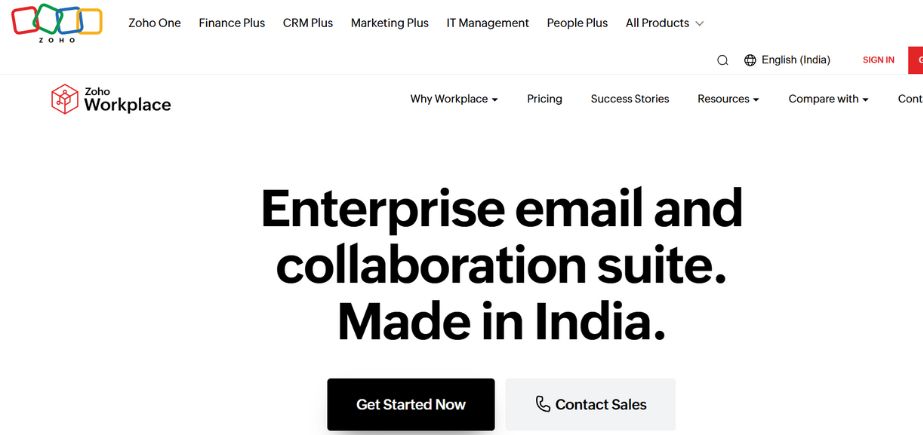
A complete productivity and collaboration package, Zoho Workplace improves teamwork and employee engagement. It has incorporated email, chat, file storage, video meetings, and many collaboration tools into a single package.
If you want your employees to stay engaged and connected in a simple digital workspace, this is a good choice. Your teams can chat using Zoho Cliq, use Zoho Mail for email, manage documents using Zoho WorkDrive, connect to other employees, and project management using Zoho Connect.
Key Features:
- Zoho Mail & Chat (Cliq)
- Meetings and webinars
- Team intranet built with Zoho Connect
- Document storage from WorkDrive
- Tools for project collaboration
- File versioning and sharing
- Dashboard for control of admin & usage
Pros:
- Integration across applications
- Affordable to small and medium enterprises
- Mobile first and cloud-based
- Easy to scale as your team grows
Cons:
- Not the easiest on the first pass
- Support turnaround time may not be consistent
- Customization beyond what they offer typically requires a technical resource
- File syncing does lag in some cases
Pricing:
- Standard: 99₹ / user / month
- Professional: 399₹ / user/month
- Mail only: 58₹ / user/month
- Enterprise: custom plans are available
Website: www.zoho.com/workplace
3. 15Five
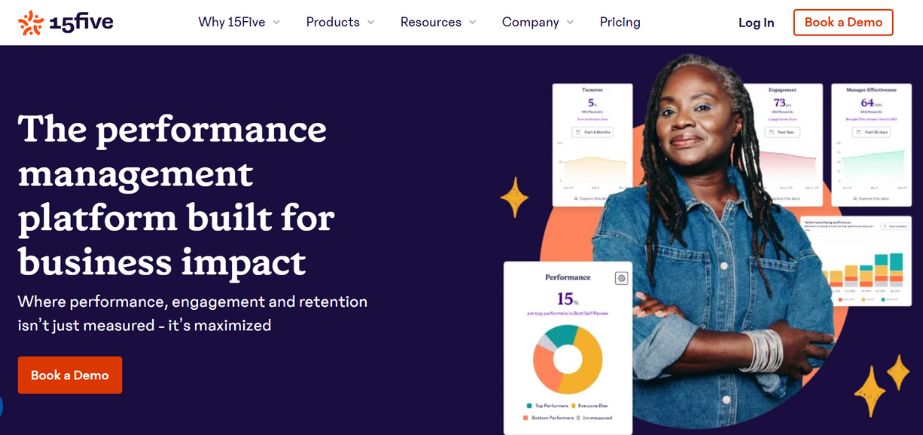
15Five is a performance management and employee engagement resource that optimizes communications between teams and their leadership. As a platform, 15Five allows orgs to solicit real-time feedback, make weekly check-ins, and conduct performance evaluations that foster professional growth.
15Five fosters a culture of transparency through continuous feedback and one-on-one coaching, which encourages accountability. 15Five is best for medium to large businesses, as it creates engagement for employee by being involved in their development journey.
Key Features:
- Weekly check-ins and pulse surveys
- Goal and OKR tracking
- 1-1 meeting templates
- Performance review resources
- Recognition/high-fives features
- Employ a coaching platform
- Analytics and engagement insights
Pros:
- Fosters transparency and feedback
- Excellent option for remote teams
- Easy for anyone to use
Cons:
- Not a lot of customization for starter plans
- High costs for smaller teams
- No time tracking or payroll features
- Reporting capabilities are not so great, some areas could be improved.
Pricing:
- Engage Plan: $4 user/month
- Perform Plan: $10 user/month
- Publish Plan: $8 user/month
- Total Platform: Custom price
Website: www.15five.com
4. Gusto
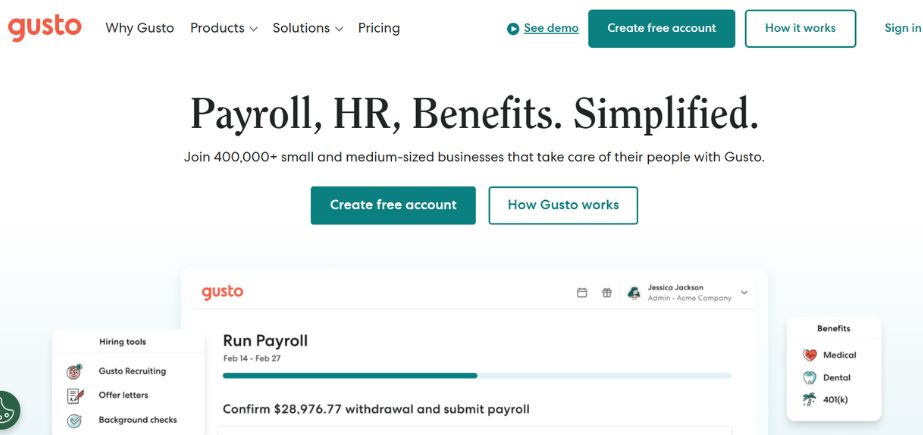
Gusto is a payroll and HR software solution that also offers a strong employee engagement tool, which has the capabilities through its organizational benefits, performance management, and cross-functional collaboration.
There are a couple of standout features that set it apart from other solutions: seamless integration between HR processes and your employee engagement strategies, and working to ensure which touchpoint your employees feel valued and supported by your organization from day one, and the frequency of check-ins or use of their benefits, etc.
Key Features:
- Employee onboarding and surveys
- Custom performance reviews
- Benefits management
- Leave of absence requests and approvals
- Team insights dashboard
- Automated birthday/anniversary greetings
- Org chart and employees directory
Pros:
- Convenient all-in-one support tool
- User-friendly and easy to use
- Great customer support
- Validates streamlined payroll and benefits
Cons:
- No global payroll support (only limited)
- No free plan available
- Advanced hr features are available only after a premium upgrade
- The mobile app was not fully functional
Pricing:
- Simple: $40 monthly + $6 per user
- Plus: $80 monthly + $12 per user
- Premium: Variable pricing based on the scope of features used.
Website: www.gusto.com
5. Sling
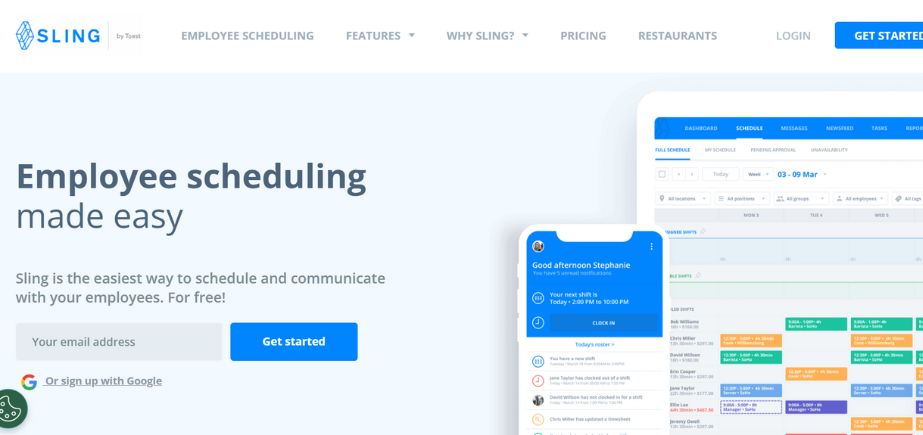
Sling is a team scheduling and communication app that specializes in maximizing engaged workforces, especially for shift-based businesses. From availability and time-off requests to elaborate schedules and communication, Sling effortlessly completes the fundamentals of engagement. It goes beyond these basics by offering task management tools, internal messaging, time tracking and attendance, shift swapping, leave requests management, reports, and analytics.
Key Features:
- Employee scheduling
- Task management with reminders
- Messaging internal to the app
- Time tracking and attendance
- Shift swapping
- Management of leave requests
- Reports and analytics
Pros:
- Great for shift processes
- Easy-to-use interface
- Aids in absenteeism reduction
- Includes team messaging features
Cons:
- Limited tools for feedback on performance
- Ideal for hourly-based teams
- Not ideal for desk-based teams
- Reporting could be fractionally improved
Pricing:
- Free Plan: Scheduling & Messaging basic plan
- Premium: $1.70/user/month
- Business: $3.40/user/month
Website: www.getsling.com
6. Deputy
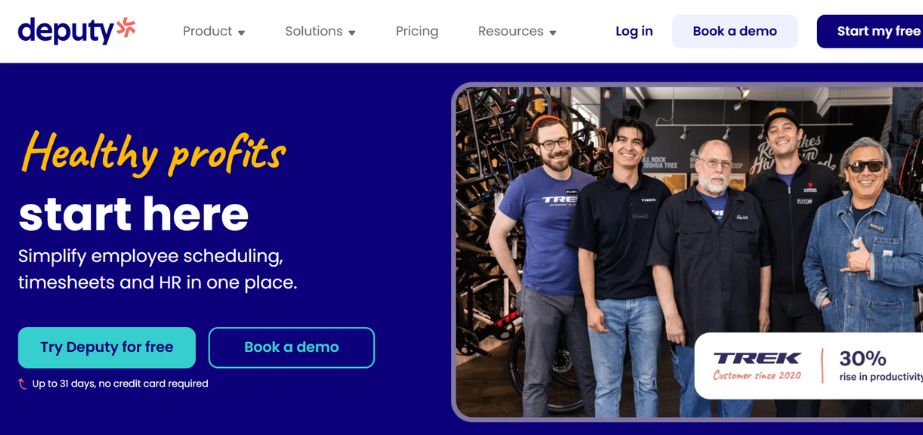
Deputy is a workforce management solution that is among the top 10 employee engagement tools, which allows for scheduling, time-tracking, and task management with a heavy emphasis on employee engagement. Real-time communication features and feedback collection tools allow teams to remain coordinated and engaged.
Deputy is designed primarily for the hospitality, healthcare, and retail sectors but includes features that promote fair scheduling, shift-swapping, and digital time clocks. Its clean interface and mobile-first construct make it a popular choice for teams that are always on the move.
Key Features:
- Smart employee scheduling
- Timesheets and payroll integration
- Shift swapping via mobile app
- Real-time announcements
- Task assignment functionalities
- Compliance tracking
- Break/lunch monitoring
Pros:
- Excellent mobile app experience
- Easy swap shift management
- Fast and accurate payroll exports
- Cost-effective for small businesses
Cons:
- Limited performance management tools
- Syncing glitches from time to time
- Inconsistent customer support response time
- Learning curve for system administrators
Pricing:
- Scheduling: $3.50/user/month
- Time and Attendance: $3.50/user/month
- Premium: $4.90/user/month
- Enterprise: Possible custom pricing to suit your needs
Website: www.deputy.com
7. Workday

Workday is a cloud-based corporate solution with complete HR, finance, and planning capabilities. Their employee engagement tools include several features like HR surveys, an HR pulse, development plans, and career pathing.
Workday’s analytics and customization options are incredible, making it perfect for larger enterprises that quickly want to track employee engagement trends, automate HR workflows, and push performance through data-driven decisions.
Key Features:
- Goal and performance tracking
- Engagement surveys
- Workforce analytics and insights
- Career development tools
- HR automation workflows
- Mobile and cloud access
- Succession planning
Pros:
- Extremely powerful for larger enterprises
- Unified HR and finance platform
- Customizability with dashboards
- Ability to report on global compliance
Cons:
- Costly for small businesses
- Time-consuming training to navigate the platform
- Time-consuming implementation process
- New users can be overwhelmed
Pricing: Workday follows a quote-based pricing model. Its pricing is based on the different modules offered.
Website: www.workday.com
8. Jobber
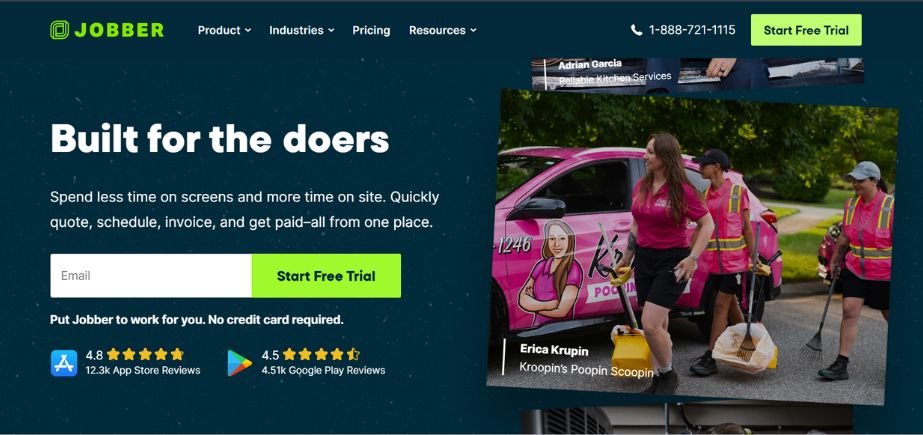
Jobber allows field service businesses to manage their business and keep their employees productive. Jobber keeps service teams engaged with real-time scheduling, communication, and updates on tasks.
While Jobber could be primarily considered a service business management tool, its easy-to-use mobile app and automated workflow design are perfect for increasing engagement of field teams.
Key Features:
- Job scheduling, dispatching, and reminders
- Tracking employees and updates
- Quoting and invoicing
- CRM with your clients’ data
- Communication in real-time
- Task manager
- Mobile First Design
Pros:
- Designed for field service industries
- Easy-to-use interface
- Able to enhance productivity, even when on the go
- Excellent customer support
Cons:
- Limited employee feedback tools
- More operational than HR focused
- Expensive for small teams
- Limited integration options
Pricing:
- Core: $49/month
- Connect: $129/month
- Grow: $249/month
- Free trial available
Website: www.getjobber.com
9. Homebase
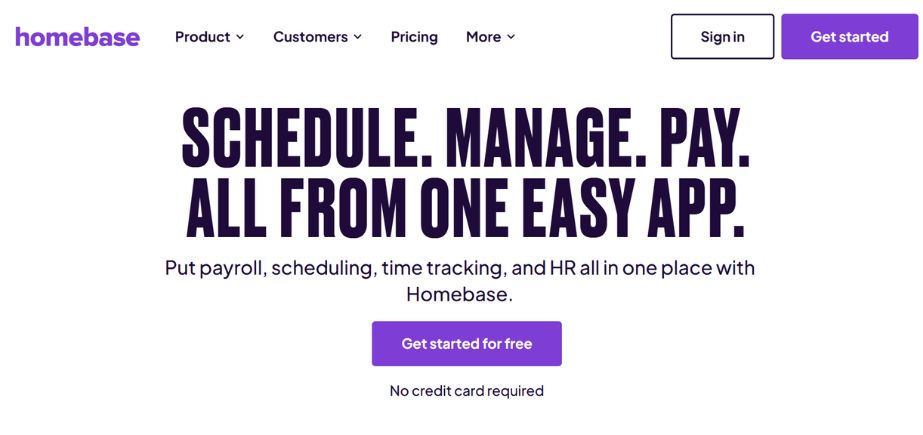
Homebase is a one-stop shop for hiring, time-tracking, scheduling, and internal team communication. For small firms with hourly employees, it’s perfect. The platform has employee happiness surveys built in and allows shifts to be rated, meaning there’s plenty of information to keep team members in the know and engaged while minimizing management time.
Key Features:
- Employee scheduling
- Time clocks and attendance
- Built-in team chat
- Hiring and onboarding
- Employee surveys
- Reporting for labor costs
- Mobile app
Pros:
- Great for hourly employees
- Free plan available
- Easy scheduling tools
- Can reduce absences
Cons:
- Limit reporting and analytics with a free plan
- No performance review process for employees
- Integration of payroll is only available in advanced plans
- Sometimes customer support takes a while
Pricing:
- Free plan: with basic features
- Essentials: $20/month/location
- Plus: $48/month/location
- All-in-one: $80/month/location
Website: www.joinhomebase.com
10. ProofHub
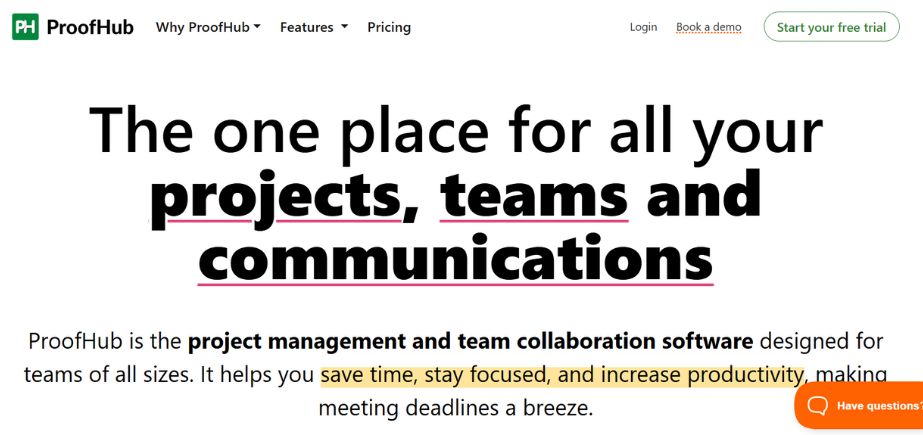
Employee engagement is greatly enhanced with ProofHub, a project management and team collaboration tool. The features allow for discussions, feedback, file sharing, and task management in one space.
In addition to the features commonly found in project management tools, ProofHub includes announcements, custom roles, and a reporting feature, which makes it a wonderful experience for project-based teams who aim for better engagement and productivity.
Key Features:
- Team discussions & chat
- Task and project management
- File proofing and feedback
- Announcements and updates
- Gantt charts and Kanban boards
- Time tracking
- Role-based access control
Pros:
- Budget-friendly fixed pricing, no “per-user” fees
- Centralized communication channel
- Ability to promote project transparency
- Very easy to use and understand design
Cons:
- Limited integrations with existing software
- The mobile app could use some enhancements
- Not the best for field crews
- No payroll or HR modules
Pricing:
- Essential Plan: $45/month (billed annually)
- Ultimate Control: $89/month (billed annually)
- 14-day free trial available
Website: www.proofhub.com
How Does Staff Management Software Work?
- Centralized Employee Profile- All employee information, like contact, forms, job details are all found in one central place.
- Automated Attendance and Time Tracking- Employees check in/out through biometrics, away from the office or mobile applications, logging information synchronously
- Leave and Holiday Allowing- Employees apply for leave, and are approved or denied, digitally.
- Task Reporting- Manager can assign a task with a deadline to an employee, and the employee can go back and update progress directly within the tool.
- Performance Appraisal System- For an organization that does yearly performance reviews, establishing critical success factors, Supervisor, peers, and reports can provide 360 feedback and review data over time with the template
- Payroll and Compliance Automation– Calculates salaries, taxable amounts, and net amounts with the pay stub. Generates forms for regulatory compliance for tax filings, once assigned a type of employee or tax situation hasn’t changed
- Employee Portal- An engagement tool that provides employees access to change their profile, access pay stubs or payslips, and schedules without needing the HR person.
Benefits of Using Employee Management Software
Here’s how businesses benefit from implementing employee management systems:
- Saves Time & Minimizes Mistakes- Automating attendance, leave, and payroll helps you eliminate manual work and reduce the risk of errors.
- Increases Productivity- with clear task ownership and tracking capabilities, your employees will stay on task, and your managers won’t need to micromanage reporting.
- Provides Transparency– Your employees will have visibility into their leave balances, appraisals, and feedback from teammates, which builds trust.
- Improves Compliance- The in-app legal compliance features will allow you to avoid penalties for mistakes related to labor laws or taxes.
- Provides Support for Remote Employees- With mobile access and cloud-based syncing, you can manage your team regardless of location.
- Promotes Employee Engagement– Features like peer reviews, recognition badges, and employee feedback tools improve morale and increase engagement.
- Helps Provide Data-Driven Decisions- HR analytics gives managers access to data on performance patterns, absenteeism trends, and opportunities for training.
Conclusion
In today’s increasingly digital and hybrid workplace, manual employee management is no longer feasible. The Best employee management tools are like having an extra pair of hands to help you run operations, keep your employees happy, and remain compliant. Whether you are a startup with your first handful of employees or a mid-sized organization ready to scale, there is a fit for you.
You should select one based on your business objectives, budget, and team needs. Once you see the benefits, you will wonder how you managed before! Your employees deserve an organized, transparent, and efficient work experience—and you deserve the peace that can come with fewer HR headaches. Let the right software help you build that bridge.
FAQs
1. Which employee management software fits small businesses well?
Zoho People, Freshteam, and Keka work well for small businesses. They are affordable, straightforward, and have all of the features you need.
2. Do employee management tools include payroll?
Yes! Many of these tools include built-in payroll systems (like Gusto) or easily integrate with payroll providers (Keka and Rippling).
3. Are these tools safe for employee information?
Definitely. Most platforms use encrypted databases and comply with global standards such as GDPR.
4. How much do employee management tools typically cost?
It can vary. You can choose a basic tool that starts at ₹100-₹300 per employee/month or a tool that is more enterprise-level, which can get much more expensive based on features and a number of users.
5. Will I need a separate tool for my remote workers?
No, most employee management tools are designed to work for remote employees or hybrid teams. In fact, many tools have a mobile app, cloud access, and geo-tagged check ins, which help make the management of remote employees seamless.

